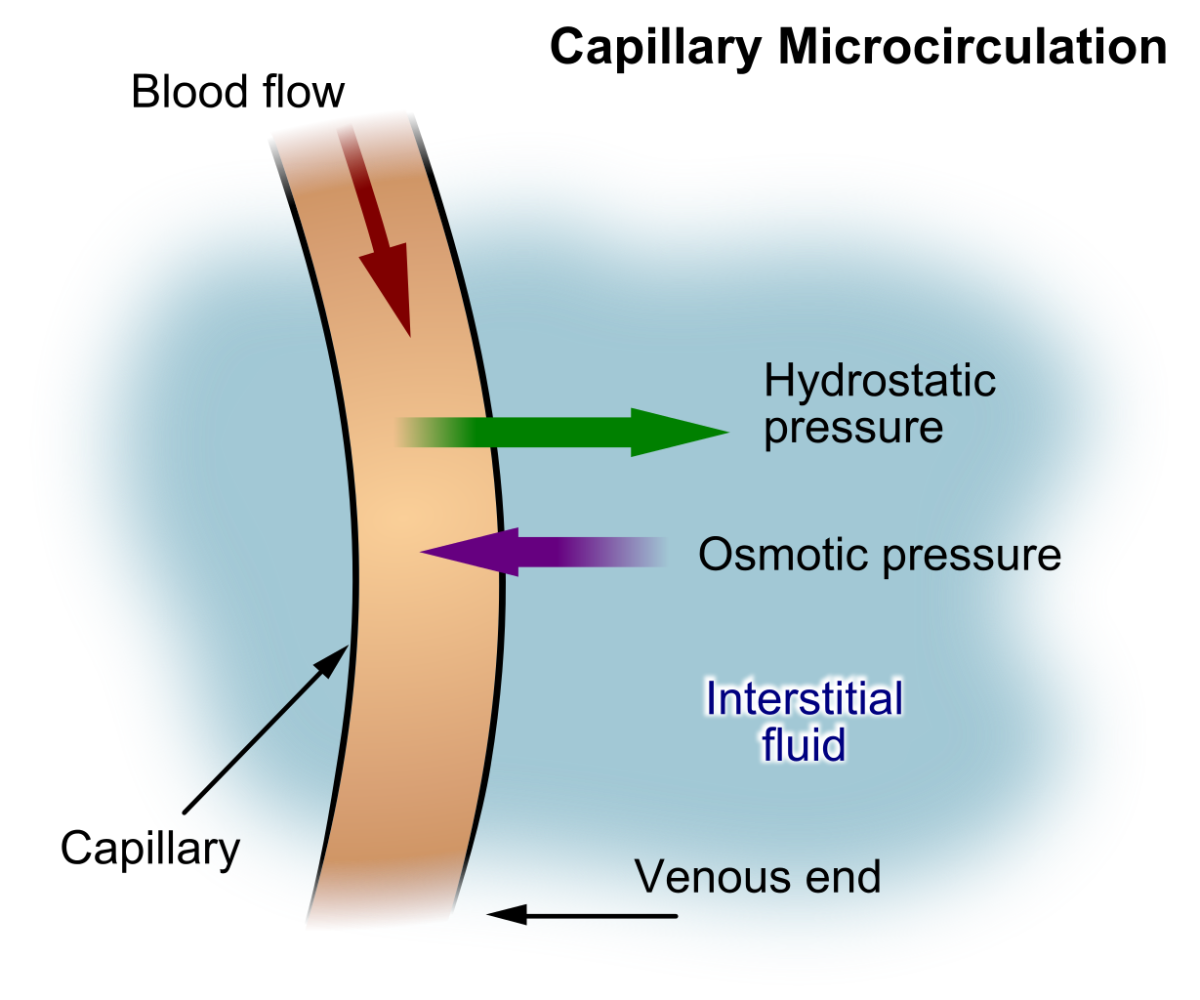Solved What is intracellular fluid Interstitial fluid Biology Diagrams The fluid in the connective tissue spaces is called interstitial fluid. Interstitial fluid is important because it bathes cells, supplying them with essential substances and removing harmful ones. A space containing the fluid is known as an interstitial space. The connected spaces form the interstitium. Thus, fluid generally moves out of the capillary and into the interstitial fluid. This process is called filtration. Osmotic Pressure The net pressure that drives reabsorption—the movement of fluid from the interstitial fluid back into the capillaries—is called osmotic pressure (sometimes referred to as oncotic pressure). Explore how interstitial fluid facilitates nutrient transport and cell communication, linking blood plasma and the lymphatic system.

The partition of fluid between the vascular and interstitial compartments is regulated by forces (hydrostatic and oncotic) operating across the microvascular walls and the surface areas of permeable structures comprising the endothelial barrier to fluid and solute exchange, as well as within the extracellular matrix and lymphatics. In addition to its role in the regulation of vascular volume Fluid flowing across the capillary walls must cross the interstitial spaces between parenchymal cells to gain access to the lymphatic vasculature for subsequent return to the vascular system (Figure 1.1). The interstitium does not simply represent a passive conduit system for the flux of fluid and solutes, but also functions as a highly dynamic and complex structure whose physical properties

Capillary Fluid Exchange Biology Diagrams
Thus, fluid generally moves out of the capillary and into the interstitial fluid. This process is called filtration. Osmotic Pressure The net pressure that drives reabsorption—the movement of fluid from the interstitial fluid back into the capillaries—is called osmotic pressure (sometimes referred to as oncotic pressure).

In anatomy, the interstitium is a contiguous fluid-filled space existing between a structural barrier, such as a cell membrane or the skin, and internal structures, such as organs, including muscles and the circulatory system. [1][2] The fluid in this space is called interstitial fluid, comprises water and solutes, and drains into the lymph system. [2] The interstitial compartment is composed As fluid exits a capillary and moves into tissues, the hydrostatic pressure in the interstitial fluid correspondingly rises. This opposing hydrostatic pressure is called the interstitial fluid hydrostatic pressure (IFHP).
